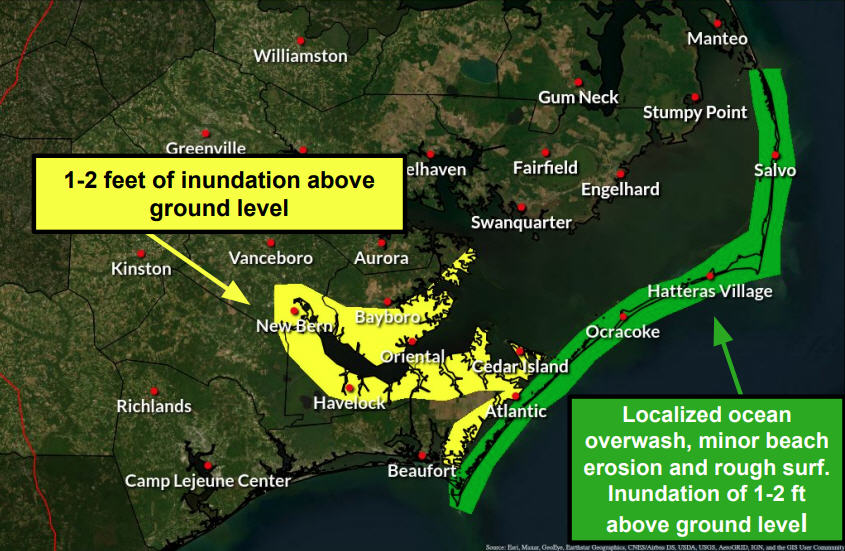New book details a horrific chapter in World War II history that unfolded off the North Carolina coast BY CATHERINE KOZAK
Two years before the 1944 Great Atlantic Hurricane devastated Ocracoke and Hatteras islands, a national tragedy had played out in the waters off the Outer Banks, and to this day, many Americans have little knowledge of the horrific slaughter that took place.
Kevin Duffus, author of the recently released book, “War Zone: World War II off the North Carolina Coast,” said that many who have attended his lectures and book signings about the U-boat attacks off the U.S. coast are astounded at the extent of the death toll, and how people lost their lives in such hellish circumstances — blown to pieces, tossed alive into flaming seas, shot to death in mid-escape, deserted by would-be rescue ships, consumed by layers of discharged oil.
“I can tell you, one universal comment I hear from people is ‘I had no idea it was this bad,’” Duffus said in a telephone interview from his Raleigh office. “The other is, ‘I had no idea at all.’”
The ugly facts are that in the last 16 days of March 1942, 11 German U-boats preyed on unprotected merchant ships transiting the Atlantic shipping lanes, with the intention of cutting off war supplies to Europe. And in just over two weeks, those enemy submarines sank or damaged 31 ships, killing a total of 683 men, women and children.
The waters off the Outer Banks, with a narrow, crooked passageway 10 miles off treacherous Diamond Shoals and 23 miles from the deep water of the Continental Shelf, were the U-boats’ prime hunting grounds. Duffus compared it to “an arcade shooting gallery at the county fair,” with allied merchant ships as the ducks.
By July 1942, U-boats had killed 5,000 people, many of them civilians, and sank 397 vessels off the U.S. coast. Of them, 1,700 souls and 78 boats were lost off North Carolina.
“This history has been largely overlooked or neglected,” Duffus said. Even acclaimed documentary producer Ken Burns, he said, barely mentioned in his TV series “THE WAR” the appallingly successful seven-month Nazi campaign that took place off of our beaches.
First covered in his 2001 documentary of the same name, Duffus said he wrote the book to tell the more complete and in-depth story — much of which had been left on the cutting-room floor — of what he characterized as an “under-appreciated” time in history, especially from the perspective of those who had a front row seat to the carnage.
Through interviews with eyewitnesses woven together with historical accounts, Duffus tells how Outer Bankers on Ocracoke and Hatteras islands were shocked awake in the middle of the night after the City of Atlanta, a freighter traveling from New York City to Savannah, was torpedoed. The Jan. 19 attack, just seven miles off Avon, was followed by a ghastly explosion that shook houses and rattled windows.
The explosions along the Outer Banks coast came more and more frequently in the coming months, and with them came washed-up empty lifeboats and ship wreckage, the possessions of crews and passengers, dead bodies. And rumors.
For months, Duffus wrote, the Nazis prowled the Atlantic coast, picking off unarmed merchant vessels, helped by the bright lights along the coastline that conveniently backlit their prey. Eventually, the coast was ordered dimmed, although not before hundreds of lives had been taken in the night.
According to Duffus’ account, there is evidence that failure to dim the lights during an Easter weekend dance at the Casino in Nags Head may have contributed to the sinking of an oil tanker and the death of 10 merchant sailors.
Fear permeated the Outer Banks, compelling residents to lock their doors for the first time to keep out Germans who might come ashore from wrecks, or who would want to spy — which Duffus says may have actually happened, to a minor extent at least.
More and more military personnel were stationed on the islands, the harbors were mined — although the armaments proved more troublesome to Allied ships than Germans — and a top secret U-boat detection system was built in Ocracoke.
During his research, Duffus discovered that the U-85, sunk off Nags Head on April 14, had also been the submarine that was supposedly sunk in January by a Navy pilot off Newfoundland who famously declared, “Saw sub, sank same.” Records recovered from Germans killed in the U-85, preserved at the National Archives, prove that their sub had escaped undamaged.
By the summer, ships began traveling in convoys, which combined with air patrols, drastically decreased U-boat attacks. But when the Allied and British warplanes were able to go for the German “hornet’s nest” in France, before the “hornets” could head to the U.S., the attacks ceased.
In retrospect, it’s difficult to understand how the U-boats were able to persist for seven months in such a deadly mission off the U.S. coast with such chilling success — and that most of the attacks were kept out of the press. But Duffus said that it’s easier to see if it’s put in context.
“If it were the only combat or military engagement in the war, then, yeah, it would be pretty inexcusable,” Duffus said. “But the fact is we were fighting a huge war in the Pacific, and in Europe.”
Resilient and adaptable Outer Bankers used their fishing vessels to help the military keep an eye on the coast. Sometimes, as was the tradition, they salvaged the wrecks. With the war literally at their front door, the islanders did what they had to do to survive. But even after the explosions quieted and the war ended, Duffus wrote, they were not the same.
“Things never got back to normal because we lost our innocence then,” Calvin O’Neal was quoted in the book. “Because before (the war) we were not part of the rest of the world, isolated as we were. It did change things. Your outlook on life was different.”
But the Outer Banks wasn’t given much of a breather after Torpedo Junction quieted. On Sept. 14, 1944, a category 4 hurricane tore through the islands, with wind gusts up to 140 mph, severely damaging 96 of Avon’s 115 dwellings and destroying eight buildings on Ocracoke Island. Two Coast Guard cutters were sunk in Oregon Inlet, taking with them 47 men. In Florida, with no help from a U-boat, the storm sunk a destroyer, killing 248 men.
FOR MORE INFORMATION
“War Zone: World War II off the North Carolina Coast,” by Kevin Duffus is available in Outer Banks bookstores and other shops. The author can be contacted at kevin_duffus@earthlink.net or check his Web site at www.thelostlight.com.
For a related article on World War II off the Outer Banks, go to http://islandfreepress.org/Archives/2007.09.28-BattleForTorpedoJunction.html. The article appeared in The Island Free Press in 2007.

























